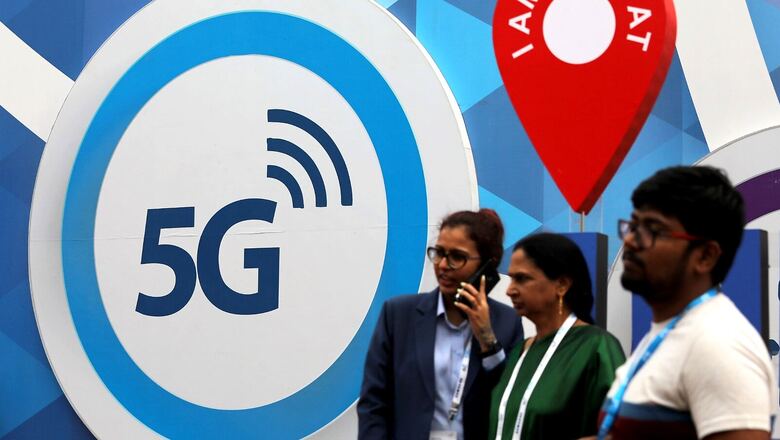India Needs 5G Ecosystem to Create Right Momentum to See Rapid Adoption, Greater Benefits to Economy

views
The arrival of 5G is a landmark moment for India as it is not just an upgrade from the well-entrenched 4G but it is a platform that could change the nature and scale of an interconnected India.
We are a Late Entrant
India, however, is a late entrant in the 5G arena. Some 89 countries/territories and 222 operator networks have introduced 5G. A quarter of the world’s population has access to 5G networks. China, with a comparable population (though a six times’ larger economy), has more than 900 million 5G connections.
But as witnessed in the Indian telecom space before, we have the ability to ramp up rapidly. There is a threshold, at which point, the penetration accelerates.
From a one-time low mobile broadband penetration, India is among the highest mobile data consuming nations, which currently is around 20 GB per month per smartphone.
The same could happen with 5G.
Market Adoption banks on early adopters
4G, which contributes nearly 70% of mobile usage in India, demonstrated its robust utility in the pandemic. With 5G getting rolled out, 4G subscriptions are expected to decline over time.
Forecasts suggest around 500 million 5G subscriptions by the end of 2027, which is close to 40% of the total subscriptions in India. The average data usage is expected to reach an astronomical 50 GB per smartphone, of which, more than 50% will be carried over 5G.
Right-Price is Important
Pricing of mobile services in India is determined by: Financial attractiveness, that is, the cost to serve and expected returns; competitive dynamics; customer’s willingness to pay a premium; and finally, risk-taking ability of the operators.
Our mobile data tariffs are among the lowest globally, trailing only Israel and Italy among significant economies. That is likely to continue for consumers. For 5G, however, the quality of experience could determine the success than low prices only. This could alter the telecom market dynamics.
Availability of 5G devices is unlikely to be an impediment. Devices have preceded 5G networks in India.
The average price of a 5G smartphone in India, though, will need to sharply decline from around US$450, which is way above affordability for most. An average price in the range of US$150 may just be the price to fuel a good uptake of 5G smartphones.
Monetisation will be over time
Unlike in China, where 5G spectrum was allocated without a cost, Indian operators have committed around US$19 billion for spectrum. Roll out investments are additional.
Operators need to reap a reasonable return for their enormous investment commitments. Operator strategies are hence expected to be more holistic to leverage wider monetization opportunities early.
High speed, low latency consumer applications such as entertainment, OTT, UHD Videos, AR/VR and gaming will pick up soon, providing an initial revenue boost to the telecom ecosystem.
But only higher speed is likely to be an inadequate proposition.
There are far greater monetisation opportunities in enterprises, start-ups, and government segments often through private 5G networks. In the US, these user segments had a 90% plus 5G revenue market share in 2021.
5G can seamlessly unleash massive Machine Type Communications (MTC) Internet of Things applications, which can be deployed across multiple industry sectors and smart cities. Healthcare, education, smart utilities, industrial manufacturing, financial services, and rich-media could be significant users of 5G -based applications.
Many of these will take time to shape up and be monetised. However, applications that have been developed and tested on 4G could be early adoption candidates.
It is imperative to create ecosystem partnerships between telecom operators, system integrators, consulting firms, domain experts, and other agencies to provide customised solutions for B2B2X customers.
Economic Impact Could Exceed Estimates
Industry forecasts indicate that a wide deployment of 5G could boost global GDP by $13.2 trillion, generating more than 22 million jobs in the 5G value chain by 2030.
A recent GSMA report mentions that 5G is likely to benefit the Indian economy by $455 billion between 2023 and 2040.
The potential is immense.
Aided by policy reforms, if the 5G ecosystem is able to create the right momentum, then we could see rapid adoption and greater benefits to the global and Indian economies.
Jaideep Ghosh is Chief Operating Officer at Shardul Amarchand Mangaldas & Co. The views expressed in this article are those of the author and do not represent the stand of this publication.
Read all the Latest Opinion News and Breaking News here




















Comments
0 comment